15 Traditional Cretan Food Delights to Experience in Crete
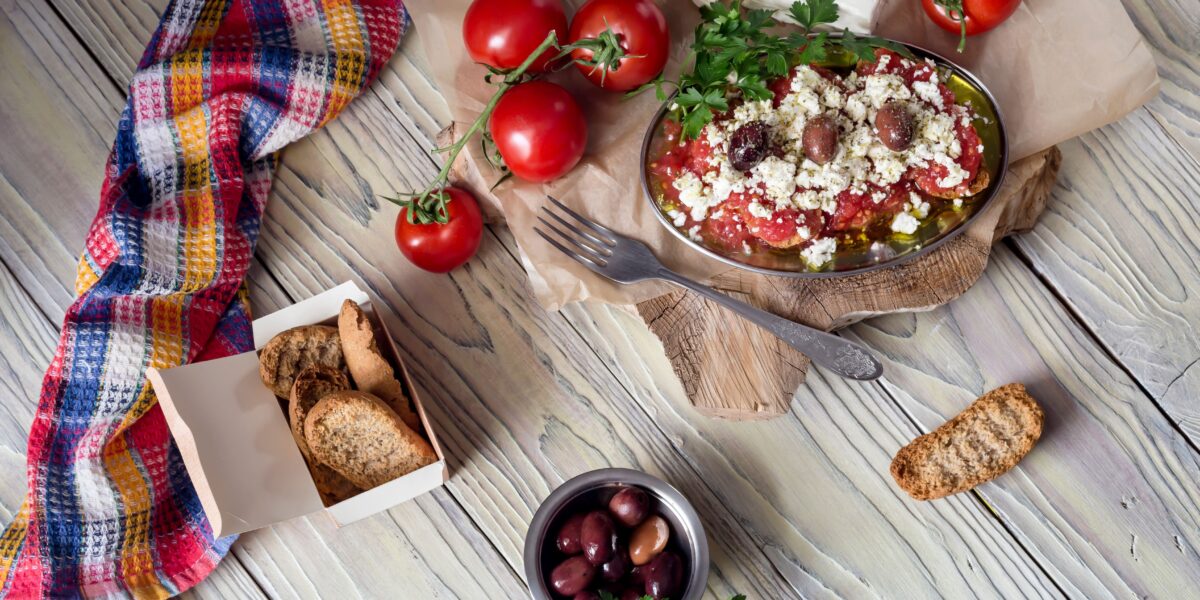
This article explores the essence of traditional Cretan food and how it reflects the island’s culture, ingredients, and way of life.
Crete is the biggest island in Greece. It is famous not just for its beautiful views but also for its Mediterranean diet. The traditional Cretan food is a big part of its traditions. It includes simple but healthy meals made from local ingredients. You can enjoy barley rusks with local cheese or tender lamb slow-cooked with herbs. Each bite lets you taste the unique flavors of Crete’s food culture. If you plan to visit, get ready to enjoy delicious dishes that show the spirit of this magical island.
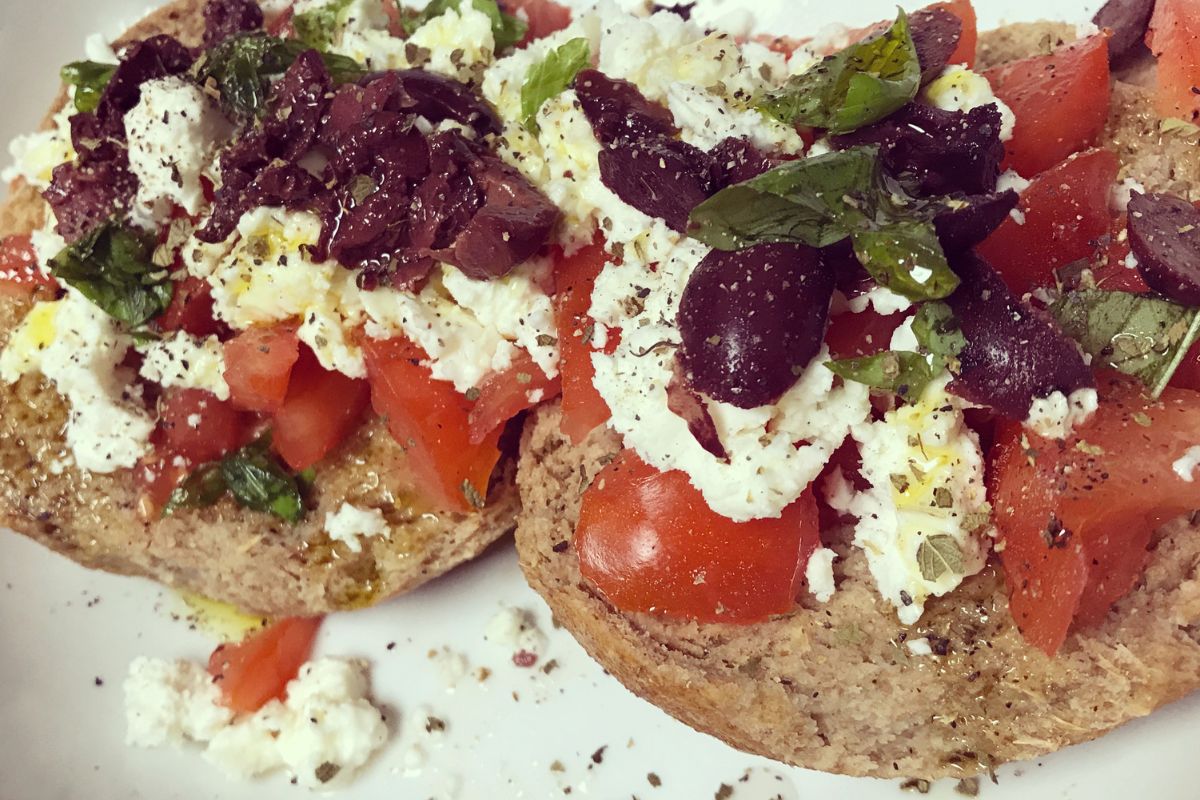
15 Must-Try Traditional Cretan Food Delights
Cretan cuisine celebrates its roots and the strong bond between the land and its people. The traditional Cretan dishes use fresh ingredients like olive oil, fragrant herbs, and rich cheeses. Traditional Cretan food is both tasty and healthy. Locals keep old recipes alive while also making new versions using modern cooking methods. You can enjoy famous dishes like dakos, wedding pilaf, and fried snails that show a love for bold flavors. Enjoy these treats with Cretan drinks such as wine or a shot of raki to really experience this beautiful Mediterranean island.
Dakos – Barley Rusk with Tomato and Cheese
Dakos is a famous starter from Cretan cuisine. The main part of this dish is a twice-baked barley rusk called paximadi. It is moistened to make it less crunchy. It is then topped with a nice amount of tomato sauce, some oregano, and local cheese like xinomyzithra. The final touch is a drizzle of olive oil. This delicious mix shows different textures—crunchy rusks, creamy cheese, and juicy tomatoes—that please the palate. What makes dakos unique is its focus on high-quality ingredients instead of complicated sauces. It reflects Crete’s food belief: fresh and simple. Enjoying dakos at a taverna or making it at home brings the essence of the Mediterranean diet to life. Make sure to have a glass of white wine with it for a better experience of this island favorite.
Kalitsounia – Sweet or Savory Cheese Pastries
Kalitsounia are light pastries filled with cheese. If you visit Crete, you should definitely try them. They are made with local cheese like myzithra, and you can find both sweet and savory types. The pastry dough is carefully made to hold the cheese filling well. In the savory types, mint adds a fresh taste. For the sweet ones, honey and cinnamon give them a nice aroma. Kalitsounia are often baked or fried. They make for great snacks or a tasty end to your meal. Their ability to be both sweet and savory shows the creativity in Greek cooking. These pastries are important in Greek culinary culture. You can find them in homes, busy tavernas, or at celebrations. Making kalitsounia is usually a community activity. It helps people share recipes through the years.
Chochlioi Boubouristi – Fried Snails
Snails, or chochlioi, are a tasty treat found in Cretan tradition with a designation of origin. One popular dish is chochlioi boubouristi, which means “snails fried in their shells.” To make it, snails are coated with flour and cooked in hot olive oil. You will hear a fun bubbling sound, which is how the dish gets its name. To add more flavor, cooks often use rosemary and a bit of vinegar or wine. This creates a dish that many find hard to resist. Snails are not just important to Crete’s food culture; they show the island’s commitment to fresh ingredients from nature. If you like trying new foods, eating chochlioi boubouristi is a chance to enjoy Crete’s bold tastes and rich traditions.
Askordoulakous – Wild Mountain Bulbs
Askordoulakous are wild mountain bulbs picked from the hillsides of Crete. They show how this region loves simple but tasty food. These bulbs have a slightly bitter but wonderful taste. Locals and foragers greatly value them. People often boil askordoulakous to take away their bitterness. Then, they are mixed with olive oil, lemon juice, and salt. This changes them into a tasty meze dish. Their cooking shows the simplicity behind Cretan food. It focuses on natural ingredients, not complicated methods. Enjoying askordoulakous can happen during a countryside meal or at a taverna. They capture the spirit of Crete. This distinctive food demonstrates how the island turns simple wild plants into memorable bites.
Staka with Eggs – Cretan Cream Cheese with Eggs
Staka is a special dairy product found in Crete. It is made from cream of ewe or goat milk. This cream is cooked slowly with flour until it becomes a creamy paste. People usually enjoy this thick mixture with fresh eggs as a nice treat. You can cook eggs in different ways on staka. If you fry, scramble, or poach them, it makes for a delicious breakfast or side dish. The buttery taste and smooth feel are very appealing. Locals like to serve it with thick bread for dipping. You can often find staka with eggs at traditional tavernas in Crete. This dish is made in a classic way, showing how much the island values its dairy products and keeps things simple.
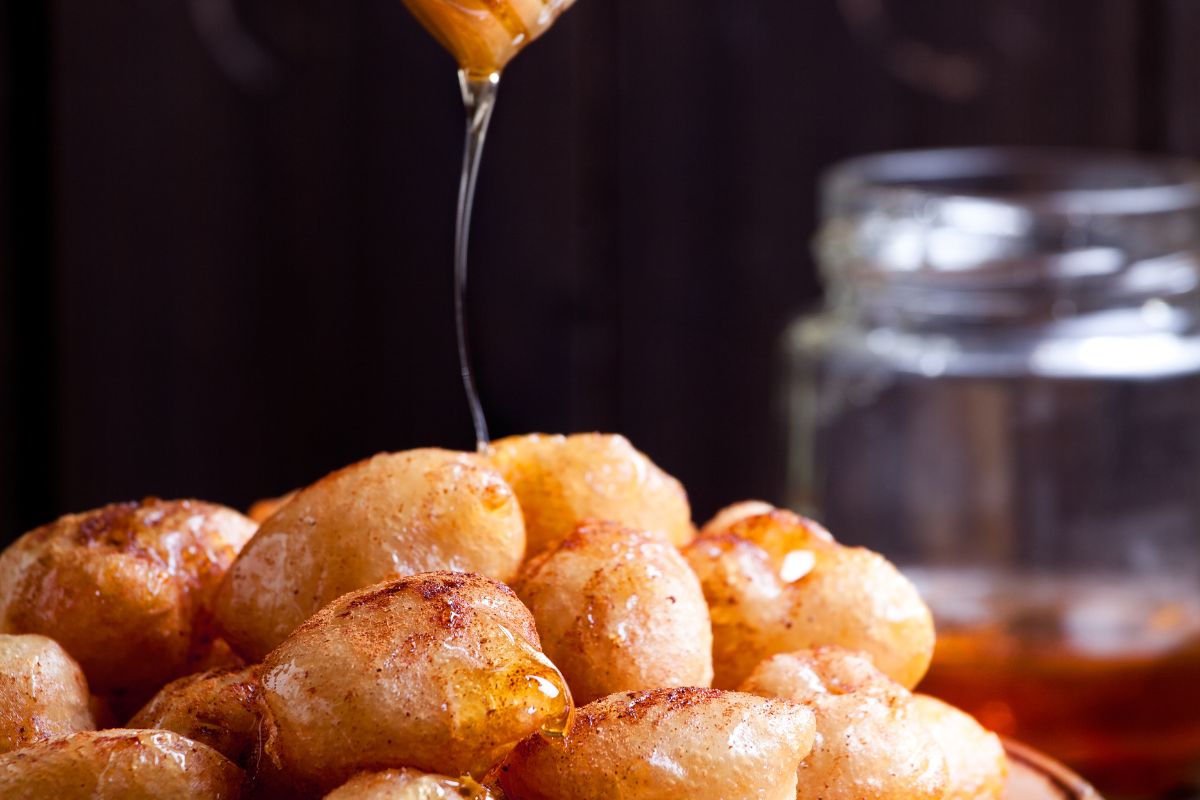
Loukoumades – Honey-soaked Dough Balls
A classic treat from Crete, loukoumades are little balls of dough that are deep-fried until they turn golden and light. They are soaked in sweet honey and often dressed with crushed walnuts and a dash of cinnamon. Their crunchy outside goes well with the sticky, sweet honey, making a dessert loved by both locals and visitors. With just a few simple ingredients, loukoumades show the best of Greek desserts—basic, tasty, and hard to resist. If you are having them at a food stand or a restaurant, loukoumades make each bite a joy. Enjoy them with coffee or tea for a complete treat, or have them by themselves as a sweet ending to a meal in Crete.
Raki – Traditional Grape-Based Spirit
Raki is an important part of Cretan culture. It is a traditional drink made from grapes and is popular on the island. This strong drink is often offered as a friendly gesture. It shows the warmth of hospitality found in tavernas. Raki is usually made from leftover grape skins from making wine. This process shows the deep customs of Crete. Enjoying raki after a big meal, with meze like local cheese and olives, makes gatherings exceptional. It brings a sense of celebration, especially during Cretan weddings. Its unique taste adds to the Mediterranean dining experience.
Gamopilafo – Wedding Rice Dish
Gamopilafo is a delicious dish that is a key part of Cretan weddings. This meal has tender rice cooked in a savory meat broth. It usually comes with chicken or lamb, which adds a tasty flavor to each bite. A splash of lemon juice and fresh herbs like oregano give it a nice, tangy kick. Gamopilafo is often served with traditional sauces. It not only shows the rich food traditions of the island but also the warm hospitality of local families. It’s a tasty delicacy you should definitely try.
Apaki – Smoked Pork
Apaki is a true treasure from the island of Crete. It shows the simple and rich taste of local ingredients. This dish features smoked pork, carefully prepared and often cured with herbs like oregano and thyme. These herbs boost its strong flavor. Apaki is usually enjoyed as meze. It goes great with tzatziki or a fresh Greek salad, making it even better. You can enjoy apaki in a local taverna or at family gatherings. It truly reflects the spirit of Cretan weddings and community meals.
Kleftiko – Slow-Cooked Lamb
Kleftiko is what Cretans call tender lamb, cooked slowly. It is a classic dish from Crete. It is usually made in a sealed pot. This cooking style helps the meat take in the tastes of rosemary, oregano, and garlic. The result is a flavorful and fragrant dish. Kleftiko is often served with fresh vegetables and a drizzle of olive oil. This makes it a tasty part of the Mediterranean diet. When you have it with a glass of red wine or a shot of raki, it becomes an extraordinary dish for gatherings and celebrations.
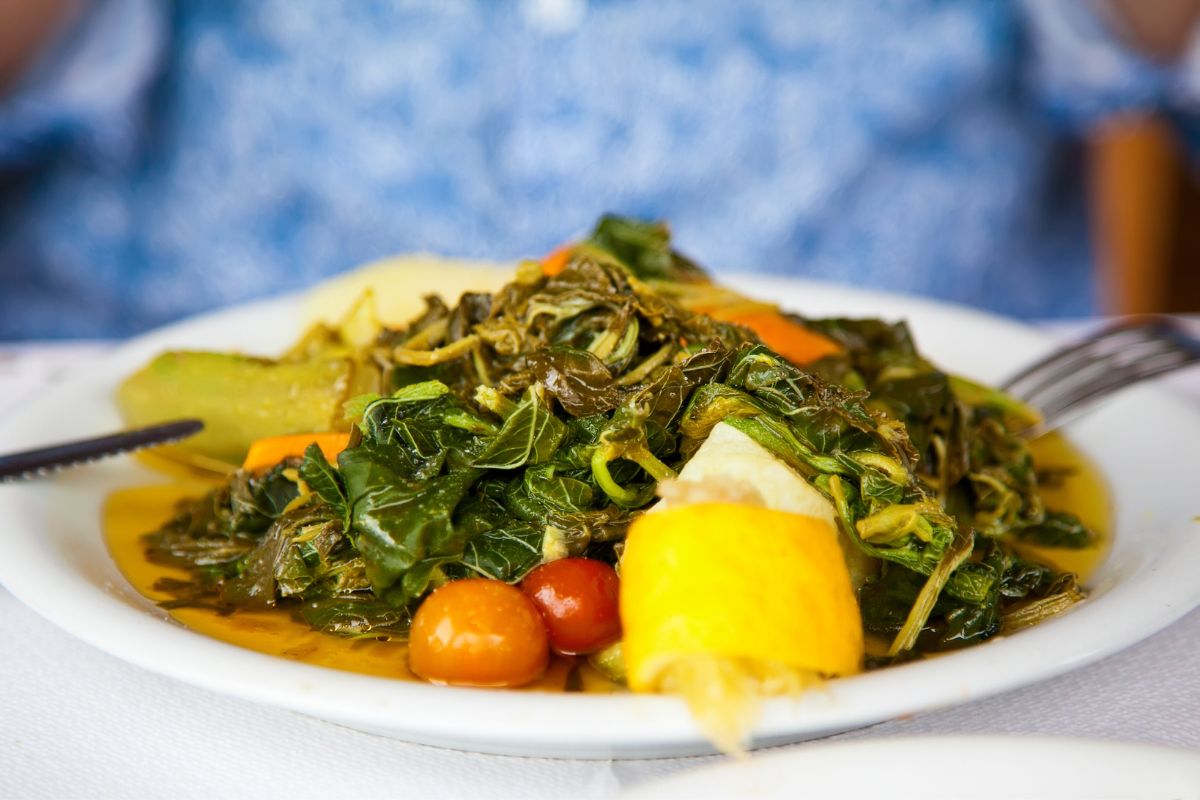
Marathopita – Fennel Pie
Marathopita is a simple and tasty dish that shows off traditional Cretan food. This fennel pie has fresh cichorium spinosum and a crunchy pastry crust. It fits well into the Mediterranean diet. People often eat it as a meze. The pie is full of local cheese and they season it with delicious herbs like oregano and parsley. If you enjoy it warm or at room temperature, marathopita delights the palate with its mouthwatering flavors. It is a beloved dish at Cretan weddings and family gatherings.
Stifado – Rabbit or Beef Stew
Stifado is a rich and hearty stew from Crete. It’s a favorite on the island and shows off its cooking skills. This dish usually has tender rabbit or beef. They slow-cook it with spices, like cinnamon and bay leaves. It is popular for family meals and special occasions. The stew includes local ingredients, like good vegetables and a strong tomato sauce. This mix makes a tasty balance of flavors. You can enjoy stifado with crusty bread or in a warm bowl. It really represents the Mediterranean diet.
Sarikopitakia – Cheese-Filled Pastry
Sarikopitakia is a tasty pastry full of cheese. It shows the simplicity and richness of Cretan cuisine. Cretans often make this dish with local cheese like feta or ricotta. The crust is flaky and has flavors from herbs such as oregano and thyme. People usually enjoy sarikopitakia as a meze. They serve it hot and pair it with drinks like raki or local red wine. This pastry comes from the countryside’s cooking traditions. It represents the heart of Cretan get-togethers and the island’s joyful spirit.
Horta Vrasta – Boiled Leafy Greens
Horta vrasta is a key part of the Cretan diet. It shows the simplicity of local food. Cretans usually make this dish from a mix of wild greens. They boil the leafy vegetables and often dress them with good olive oil and a bit of lemon juice. This adds to their natural taste. You can enjoy horta vrasta warm or at room temperature. It goes well with other traditional foods. That is why it is a popular meze in tavernas around the island of Crete. This dish highlights the fresh produce of the Mediterranean and reflects Cretan ideas about healthy eating.
Antikristo – Barbecued Lamb
Antikristo is a beloved Cretan dish. Cretans cook the lamb over an open fire and marinate the meat with local herbs, such as oregano and thyme. This adds to its tasty flavors. Cretans serve antikristo with olive oil infused with rosemary and a bit of lemon juice. This dish shows the heart of the Mediterranean diet. People often enjoy it during celebrations. It brings friends and family together. Antikristo is a tasty meze that represents the island’s rich farming land and traditions.
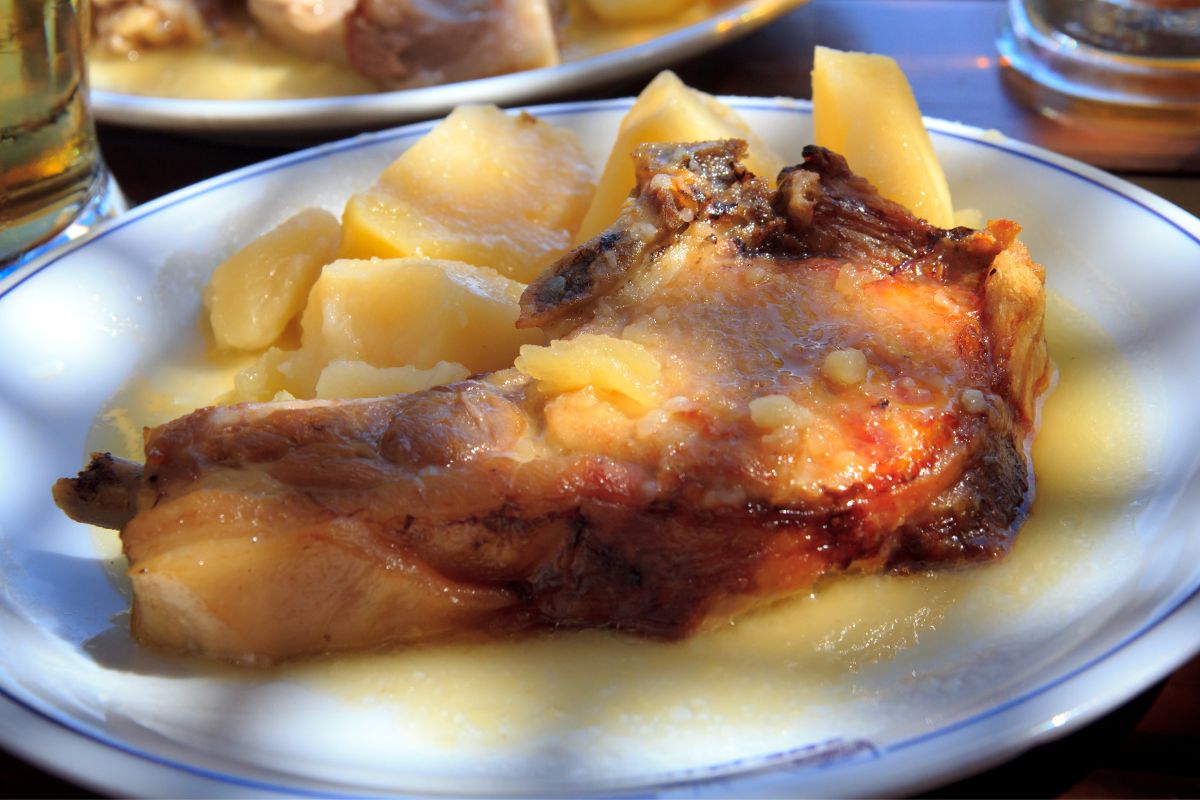
Culinary Experiences in Crete Designed by Elissos
Elissos invites you to explore Crete through its flavors, stories, and traditions with a curated selection of immersive culinary experiences. Whether you’re baking bread in a village wood oven, harvesting grapes in the autumn sun, or cooking Minoan-style meals over a hearth, each experience connects you with the land and its people by design. From guided food walks through Heraklion’s bustling markets to hands-on cooking classes in family kitchens and olive groves, you’ll taste your way through Crete’s rich past and vibrant present. These tours are not just about food—they’re about sharing local life, learning by doing, and discovering Crete’s heritage through traditional Cretan food, one bite at a time.
A Hands-On Experience of Rural Life, Food, and Craft
This full-day experience in Central Crete takes you to the village of Assites, where you’ll explore traditional architecture, visit a 16th-century church, and learn about Cretan crafts like bell-making and basket weaving. You’ll tour a honey workshop and dairy, tasting fresh local products including olive oil, cheese, wine, and raki. A hands-on cooking class in a local home follows, where you’ll prepare three traditional dishes using farm-fresh ingredients. The day ends with a home-cooked lunch served with the family’s wine and raki. The hosts may also include seasonal activities like olive picking or raki distillation. The tour includes all tastings, a licensed guide, private transport, and a full meal.
A Taste of Heraklion: Exploring History, Markets, and Local Flavors
This half-day walking tour through Heraklion combines the city’s rich history with its vibrant food culture. You’ll explore key landmarks from the Venetian and Ottoman periods, including the Morosini Fountain, St. Mark’s Basilica, the Venetian Loggia, and the Sea Fortress. Along the way, enjoy local treats like bougatsa, loukoumades, Greek coffee, and herbal teas. At the open-air market, sample cheeses, honey, raki, and more while connecting with local producers. The experience ends with a guided olive oil and wine tasting, paired with a light Cretan lunch—offering a delicious glimpse into the island’s culinary traditions.
A Taste of the Minoans: History, Myth, and Cooking in East Crete
Travel back to Minoan times with a half-day experience that blends history, myth, and food in a fun and engaging way. The day begins with a visit to the Minoan Palace of Malia, once home to the mythical King Sarpidon. Easy to explore and rich in history, the site offers insight into the Minoan labyrinth and daily life through stories designed to captivate both kids and adults. Next, gather around a hearth for a Minoan-style cooking class led by an archaeologist. Using clay pots, you’ll prepare traditional dishes like herb-flavored lentils and flatbreads, cooked just as they would have been in ancient Crete.
Live Like a Local: A Day in the Heart of Cretan Village Life
Spend a full day in a traditional mountain village of Heraklion, where you’ll join a local family and experience daily life the Cretan way. From brewing Greek coffee and baking bread in a wood oven to helping with seasonal farming tasks like goat milking or olive picking, you’ll become part of the household for the day. Together, you’ll prepare a traditional starter and watch the family cook “antikristo” lamb over an open fire. Your meal includes three courses made with organic ingredients from their garden, paired with local wine and raki. You’ll also visit a local dairy, explore the village, stroll past ancient wine presses, and—if the season is right—join in grape stomping or raki distillation. This experience includes all activities, a cooking lesson, a traditional meal, private transport, and a licensed guide—offering you a true taste of authentic Crete.
Tastes and Traditions: A Half Day in Authentic Crete
This half-day cultural experience takes you deep into the heart of South Central Crete, far from the crowds, where local life still follows the rhythms of tradition. The tour begins with a visit to the historic Monastery of St. Irene, a 16th-century landmark that offers insight into the island’s religious heritage through its well-preserved architecture and calm atmosphere. From there, you’ll head to a nearby village known for preserving Crete’s musical traditions.
A Day of Wine and Taste in Central Crete
This full-day experience invites you to discover the rich winemaking heritage of Central Crete, a region that has cultivated vineyards since the Minoan era. As you travel through the lush central and south-central coast, you’ll pass through landscapes defined by olive groves, ancient trees, and striking rock formations that shape the unique character of the Heraklion region. The day includes visits to two of the island’s most notable wineries. With the guidance of wine experts, you’ll explore their facilities and gain insight into the full production cycle—from vine to bottle. A walk through the vineyards and a tour of the cellars will offer you a deeper appreciation of the craft and tradition behind every label.
Tastings are an essential part of this experience. You’ll sample a selection of Cretan wines and learn to recognize their unique aromas and textures, guided by professionals who will help you understand the differences between local grape varieties. A light lunch is also available, featuring local meze dishes that pair perfectly with the wines.
Cretan Traditions: Olive Oil and Wine Through Time
Spend a full day in Central Crete exploring the island’s deep-rooted traditions of olive oil and wine production. The experience begins at a local olive oil factory, where experts show you how they make extra virgin olive oil and let you taste it fresh from the source. Then, step back in time at Vathipetro, home to Europe’s oldest known winery and olive press, dating back to 1700 BCE. Continue to a family-run winery for a tasting of regional wines and raki, followed by a home-cooked lunch at a peaceful agro farm surrounded by vineyards and olive groves. Depending on the season, you may also take part in grape harvesting, raki distillation, or olive picking—hands-on experiences that connect you to Crete’s living traditions. The tour includes private transportation, a licensed guide, and all scheduled visits and tastings.
The culinary journey in Crete is full of tasty traditional flavors. You can enjoy traditional Cretan food like local cheese and rich olive oil. Each dish has its own story. It reflects the island’s culture and history. Fresh ingredients like tomatoes, herbs, and spices add to this experience. Trying Cretan food is not just about eating well. It helps connect you to the Mediterranean lifestyle. Discovering these dishes lets you enjoy each bite and appreciate the simplicity of local traditions.
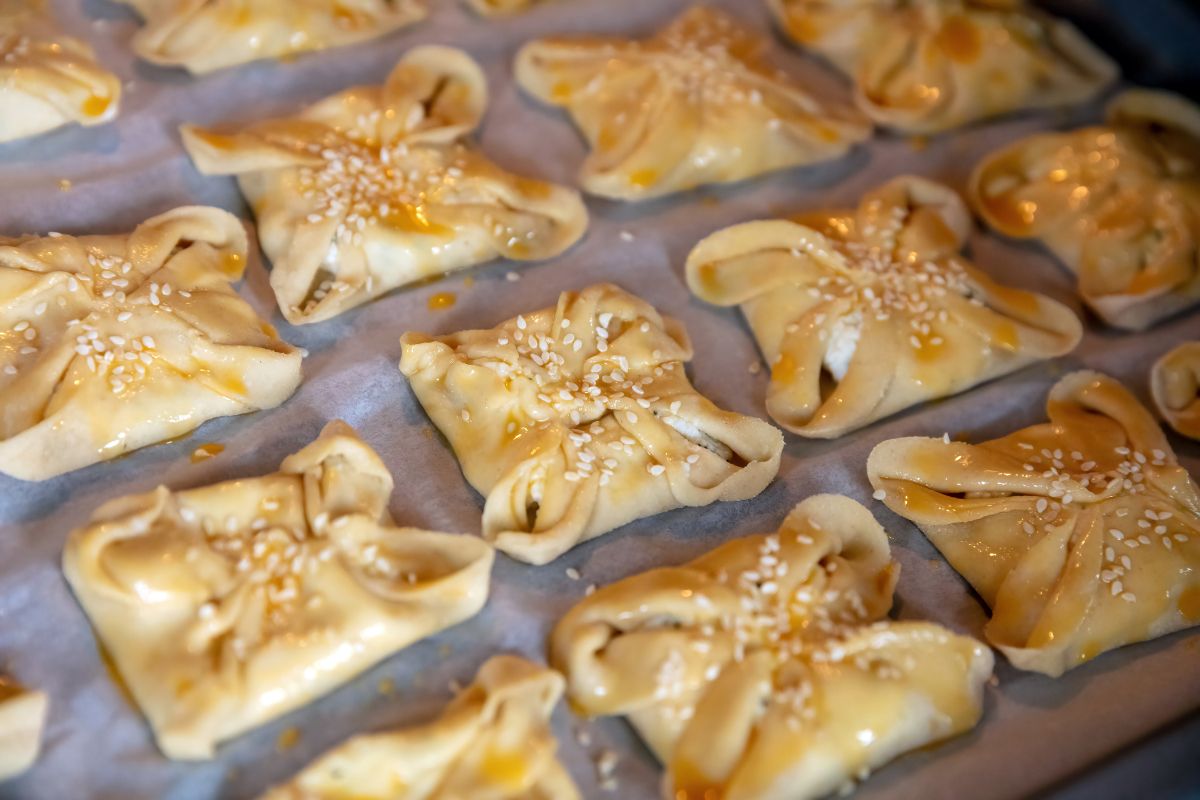
Frequently Asked Questions
What is the Most Popular Dish in Crete?
Can I Find Vegetarian Options in Cretan Cuisine?
Cretan cuisine has many vegetarian choices.You can try horta vrasta, as locals boil leafy greens and serve them with olive oil and lemon. Another option is marathopita, a tasty fennel pie. There are also many fresh salads. When you eat these dishes, you will enjoy the natural flavors from local ingredients. These traditional meals reflect the island’s rich culinary heritage.
